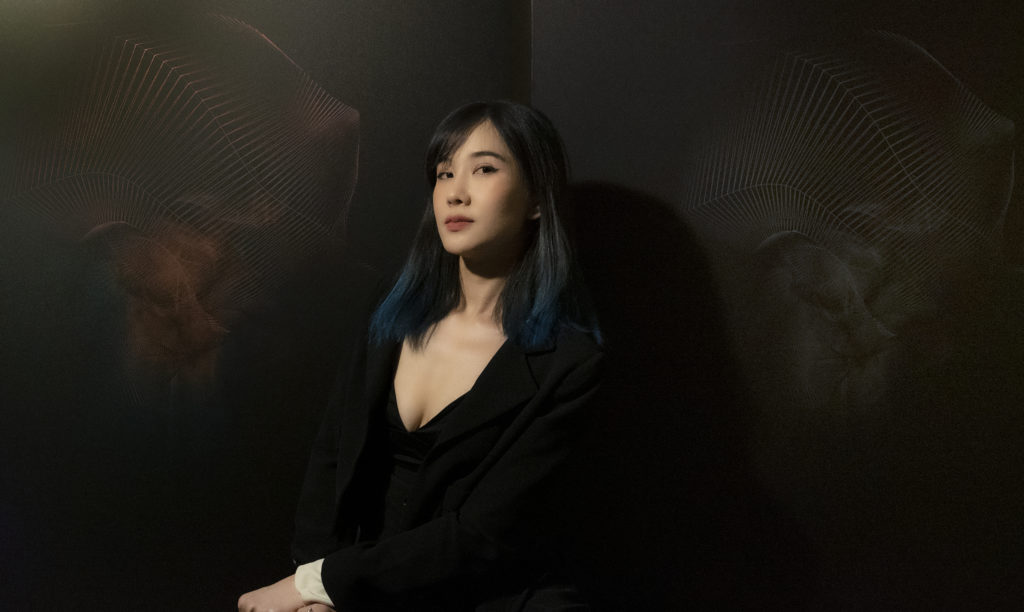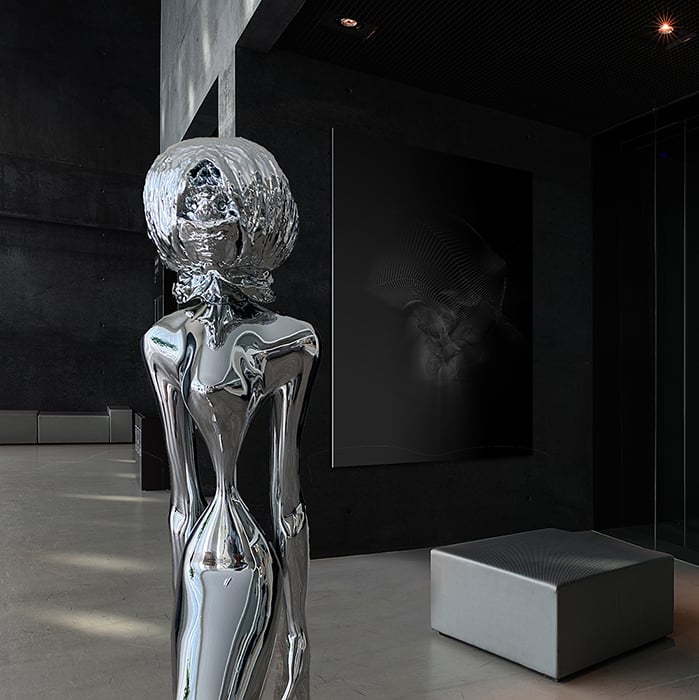Why One Beverly Hills Gallerist Believes Video Art Will Thrive for Thousands of Years


Artnet Gallery Network

While navigating online viewing rooms over the past several weeks, it has come to the attention of many that video art may be the medium best adapted to the experience. While more traditional media are more fully rooted in the in-person experience, video can convey most of its essence over computer screens.
Nalada Taechanarong, the director of Xumiiro, a video-centric Bangkok- and Beverly Hills-based gallery, believes that video art is the future. But as with many things new and unfamiliar, she feels the mainstream is going about in an uninspired way.
“Online viewing rooms are a new term, but how are they different from regular websites?” Taechanarong asked. “There needs to be more than just pictures on a page. Online and in-person, we aim for an immersive visual and audio experience.”
In normal times, Xumiiro Gallery’s artists present large-scale installations in darkened rooms, with chilling sounds and visuals interacting to a hallucinatory effect. “Our gallery is not for everyone,” Taechanarong acknowledges.
But there is an audience. One of the gallery’s leading artists, who is known only as 0010×0010, recently had his MOCA Bangkok exhibition, “MØDVLXXR,” extended three times. A copresentation was in the works with London’s Saatchi Gallery this summer, but had to be postponed due to the city’s lockdown. So Xumiiro Gallery has decided to bring some of its planned exhibitions online—and they’re a far cry from just images on a webpage.
We spoke with Taechanarong about her thoughts on her artists, video art, and why people still hesitate to collect new-media works.
What makes Xumiiro Gallery unique when it comes to video art?
The works we show, in person and online right now, are audio-visual art pieces that stimulate the eyes, ears, and mind through a combination of stills, video, and 3D audio. Often when galleries show video works, the artist has borrowed the music or sounds; our artists create all aspects as one vision. Our gallery does offer works in more traditional media, like mixed media, sculpture and photography, but the primary goal of the gallery is supporting Audio/Visual artists.
Unlike most galleries and artists, we’re not trying to focus too much on getting exposure through social media etc. I think much of the mystery and exclusivity of art and artists is getting lost this way.
What hesitations do you think people have about collecting video art?
Many people still feel insecure about it, even though now many contemporary and modern institutions are very actively collecting video art. Collectors are still more comfortable with static-image culture, paintings and sculptures because it’s an easy medium to understand. Audio/Visual art comes in various formats and for some collectors this feels uncomfortable. Kind of like investing in cryptocurrencies as opposed to the conventional gold or silver. When it comes to our gallery, not everyone will get it.
But I believe video art is and has been the future, and so those who are interested are very avant-garde. I think some collectors might not think of video art this way, but I believe that video artworks can stand the test of time and can endure for thousands of years. Artists like Nam June Paik and Bill Viola started this movement a long time ago and proved to still be relevant at museums and auctions today.
Who are your primary collectors right now?
Our clients are very niche, both our long time and new collectors — people who are looking for new art experiences and whoare looking to invest in future mediums. Our artists are very intense, sometimes even crazy in the way they live, breathe, and die for their creations. This is something that is often overlooked nowadays, but in the history of art you can see that the most creative works often come from artists who lived extreme and eccentric lifestyles. And it’s not just about money; these works take time and vision to create. Currently, I’m working with waiting lists and I handpick the clients myself. So just because you have money, doesn’t mean you can just have a work.

Sculptures, photography, and paintings sometimes compliment of Xumiiro Gallery’s audio-visual immersive art spaces.
Can you explain to me the concept of 3D audio that artists in your gallery work with?
3D audio is a newish concept that’s been around for four or five years. We experimented with this in one of our recent exhibitions. The room is configured with multiple speaker setups placed in specific spots in dark rooms so that people can experience the visuals together in a choreographed way. Only a few people can be in the space at a time. We’ve moved some of this online now, because of the shutdown and we converted the audio with 3D software for headphones, so people can have something of the experience at home—I think much more so than with a typical online art experience.
Would you say your gallery’s approach to video art is more about quality than accessibility?
People have experiences with digital video art content, like subscription-based video art concepts for instance. That’s $10 a month, but there’s no quality control. I understand it provides more access, but it’s not possible to deliver unique high-level content and experiences for that price. I often hear comments from people that can’t distinguish their computer screensavers from the offered video art. Also, in the case of Spotify for instance, people listen to music sort of mindlessly because of the huge amount of music and artists available. When people had to queue up to buy vinyl or a CD, people would take that home and listen to the music hundreds of times and those albums became classics. Something that we rarely see anymore.
We want the experience to be treasured. I compare it to an ancient Egyptian pyramid. Everyone can see the pyramid from the outside, but not everyone knows what is inside of it. This experience is more high-end and for specific clients that want to put the extra effort to obtain it. People are meant to spend time with it. At the exhibition in Bangkok, people would spend half an hour in one room. I think in this century, people are missing certain qualities and we’re trying to bring that back.
See a video walkthrough of “Collection A” available at Xumiiro Gallery below.
[bc_video video_id=”6156423585001″ account_id=”4129125564001″ player_id=”default”]